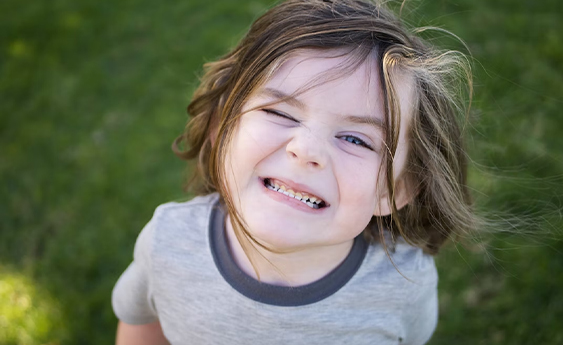TREND NEWS CENTER
A Child’s First Dental Visit: What to Expect?
Dental appointments can make patients, in particular pediatric patients, anxious or scared. Various dental instruments, staff wearing gowns, and dental procedures can increase some children’s stress levels. Having more information usually helps in reducing uncertainty and, thereby, anxiety. Here highlight what to expect from a child’s first dental appointment.
When to make a child’s first dental appointment?
As infants start to get their teeth, parents or primary caregivers need to focus on dental hygiene. The American Dental Association recommends that a child’s first dental visit be as early as their first tooth or before their first birthday.
Research shows that most children visit dentists around age four, and pain is the most common reason for the visit. Additionally, the parent’s educational level influences when they schedule their child’s first dental visit. However, the data shows that parents with at least primary education make the first appointment before the child’s first birthday.
For an older child (or adult patient) visiting a new dental office, scheduling a visit every six months can help get necessary routine preventative care. However, if there are any symptoms, such as a toothache or swollen or bleeding gums, schedule a dental appointment sooner.
Do dental offices follow preventative measures against COVID-19?
To fight against the spread of coronavirus, dental offices introduced preventative measures per directions from local or federal authorities. Although the COVID-19 pandemic has entered an endemic stage, some dental offices continue to follow these protocols. These protocols may include:
Temperature checkup
Some dental office staff will use an infrared thermometer to check body temperature.
Mask
The child and parents may need to keep their masks on until they are in the examination room.
Hand sanitizer
The use of hand sanitizer may be recommended before entering the clinic.
Personal Protective Equipment (PPE)
Staff use PPE such as gowns, shields, masks, and gloves.
Call the dental office to discuss the details if you have any questions or concerns regarding the coronavirus prevention protocols.
How to prepare for a child’s first dental visit?
Start preparing for the dental visit after you schedule an appointment. If the child is old enough, explain to them what happens in a dental visit. For example, have a pretend dental “play date”, so they can practice opening and closing their mouth when instructed. Use books with pictures or videos to describe a dental visit, if available.
Parents can prepare for the visit by filling out the paperwork ahead of time. The first dental visit usually lasts for 30-45 minutes. Since the visit time is relatively short, parents may want to make a list of their concerns that need to be discussed with the dentist. For instance, pacifier sucking, orthodontic problems, noticing dental cavities, and referral from a pediatrician for a systemic disease are some of the most common concerns for parents.
What happens at the dental visit?
Typically, the office staff informs about the COVID-19 protocol and then welcomes the patient and their caregivers. Some dental offices may check the child’s overall growth by measuring their height and weight, while others may simply ask parents to provide that information.
If the child is old enough, the dentist (or their staff) will talk to the child and give them information about the instruments in simple language. For instance, the mirror helps to look at teeth in the back. The dentist also helps the child to get comfortable in the dental chair. The child may need to wear goggles and a napkin to keep them safe from water spills.
Next, the dentist takes X-ray images from various angles to diagnose any cavities or other bony deformities. After reviewing the X-ray, the tooth cleaning procedure is done. Some clinics may have videos or music to help children relax during this process. Once the cleaning is complete, a staff member flosses the teeth. The last step is fluoride application which helps to prevent cavities.
Apart from these procedures, depending on the X-rays results and diagnosis, treatment for cavities may be necessary. In some cases, the dentist may advise maintaining oral hygiene regularly and monitoring the cavities periodically. Otherwise, depending on the stage of the cavity, dental filling or a root canal may be done. During the preventative care visit, sealants may also be applied to maintain oral health.
Their first dental visit can indeed be anxiety-provoking for young children. Help to reduce a child’s anxiety and fear by giving them more information about the visit and providing emotional support. During the child’s first dental visit, expect a dental evaluation and preventative care such as routine cleaning. This helps in maintaining oral hygiene and promotes the prevention of cavities in young children.
Source: Healthnews
